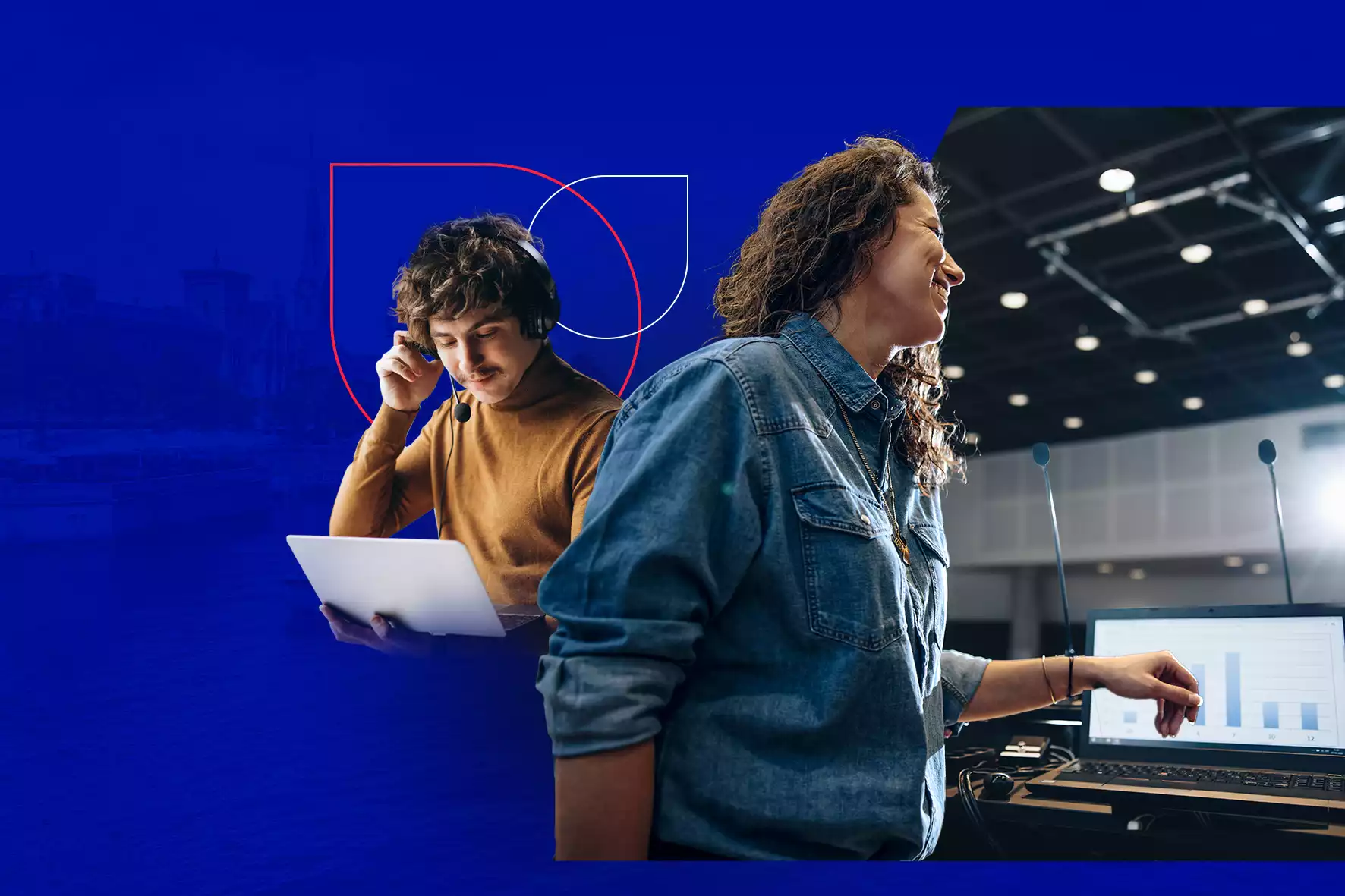You might think that the world of translation only revolves around classic written translation services, regardless of whether the field is technical or legal. However, one of the trickiest aspects of translation is interpretation.
The number of employees in the translation and interpretation sector has doubled over the last seven years, and is expected to grow by 29% between now and 2024. Pandemic or otherwise, interpretaion is indispensable.
What is interpretation?
Interpretation is a system of oral or sign language communication between people who do not speak the same language or who don’t use the same linguistic codes.
The interpreter works in real time, in contact with the sender (speaker) and receiver (listener). She has a very short space of time in which to reflect and accurately convey the message in the most appropriate style.
What are the different types of interpretation?
Simultaneous interpretation
Simultaneous interpretation takes place at the same time as the speaker is talking. The interpreter translates the speaker’s words into the target language as quickly as possible. In order to hear the interpreter, the participants wear earphones. Using a microphone, the interpreter is usually situated in a soundproof booth, where he or she can clearly see the speaker and hear the speaker through headphones. The interpretation is simultaneously delivered to the participants’ headsets in the target language .
Simultaneous interpreting is very often used at congresses and conferences, as was the case, for example, at the last United Nations Conference of the Parties on climate change (COP26). It was used for the first time by the Allied Powers of the Second World War at the Nuremberg Trials in 1945 and 1946, before several military tribunals.
This type of interpretation is extremely intense for professional interpreters. Interpreters work live: as they are speaking, they must be able to hear the rest of the speech in order to report it.
Consecutive interpretation
Consecutive interpretation consists of reformulating the speaker’s words after she has finished speaking. While the speaker is speaking, the interpreter takes notes. If the speaker’s speech is long enough, the speaker can pause to help the interpreter. This also allows the audience to better understand the speech. Consecutive interpretation therefore makes it possible to better grasp the meaning of the speaker’s speech by retaining only its essential character.
Consecutive interpreting is often used in the field of medicine, for communication between doctor and patient, or in commercial negotiations.
The interpreter can control the situation better than with simultaneous interpreting: he or she can point out ambiguities and ask the speaker to repeat or clarify the meaning of terms that may cause problems.
Whispered interpretation or chuchotage
Whispered interpreting, or chuchotage, is a variant somewhere between simultaneous and consecutive interpreting. The interpreter sits next to the listeners and slowly and quietly translates the speaker’s words.
However, whispered interpreting is only possible in the presence of a small audience (usually two or three people).
Liaison interpretation
Liaison interpretation ressembles consecutive interpretation. The interpreter memorises brief exchanges in the source language and then reproduces them in the target language.
Liaison interpreting is often used in small groups, for example during business meetings, guided tours, contract stipulations and commercial negotiations.
Interpretaion materials
Depending on the type of interpreting required, equipment is sometimes needed to enable the professional interpreter to perform his or her job to the best of his or her ability.
For example, simultaneous interpreting is the type of interpreting that requires the most equipment. Simultaneous interpreters work in soundproof booths, which can be fixed or portable, depending on the layout of the venue. Inside the booths, interpreters need interpreting consoles, headphones and a desk light. Outside the booth, there is a public address system with loudspeakers, and microphones for the chairperson, speakers and listeners to allow delegates to follow the interpretation.
In contrast, consecutive interpreting generally requires no special equipment. All the consecutive interpreter needs is a notepad and a pen. But this requires special note-taking skills.
The type of interpretation you need depends on the event you wish to translate, the number of people present and the time you have available.
Every event is unique, so don’t hesitate to contact us if you need help choosing the right type of interpretation for you.
